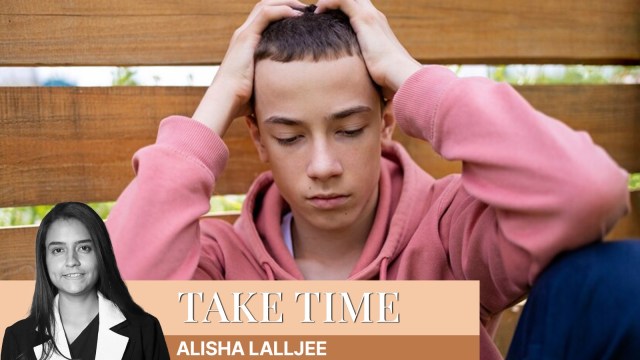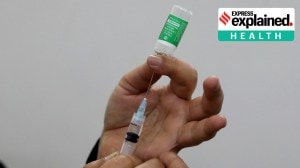- India
- International
Five common mental health concerns among teens
Be it binge-eating disorders or ADHD, help is around the corner. But it is important for parents to act on symptoms
 It’s important for parents to know substance use and mental health disorders like depression and anxiety often co-occur (Photo: Freepik)
It’s important for parents to know substance use and mental health disorders like depression and anxiety often co-occur (Photo: Freepik)Often, when we think about adolescence and young adulthood, we think about ‘easier’ times. For parents, it’s easy to assume that our teenagers are carefree, living life, and have no worries in the world. Unfortunately, this is not always the case. Mental health disorders are becoming increasingly common in teens and COVID-19 has contributed to rising trends. In fact, in the first eight months of the pandemic, mental health emergencies among 12-to-17-year-olds rose by 30 per cent. As a parent, it is important to be aware about potential mental health disorders. It is also heartening to know that you are not alone. Statistics show that mental health disorders are common in youth, with more than one in six youth (ages 6 to 17) experiencing a mental illness every year. Below we outline some of the more common mental health disorders among teens and young adults, to help you become educated and better help your teen.
Anxiety Disorders
Anxiety disorders are the most prevalent mental health disorder among adolescents today. The World Health Organization reported that four per cent of 10-14 year-olds, and five percent of 15-19 year-olds experienced an anxiety disorder. Most people develop symptoms of an anxiety disorder before age 21.
Anxiety disorders are not simply isolated feelings of anxiety – they affect one’s day to day living. They are characterised by persistent, excessive fear or worry in situations that are not threatening. In teens, anxiety might show as:
- Constant feelings of apprehension or dread
- Restlessness and irritability
- Anticipation of the worst possible outcomes
- Racing heartbeat and shortness of breath
- Upset stomach and fatigue
- Insomnia or frequent trouble sleeping
- Feeling tense of jumpy
There are different types of anxiety disorders, so it is important to meet with your clinician if you suspect this mental health condition is arising in your teen. Anxiety disorders may fall into the category of a phobia, panic disorder, social anxiety or generalised anxiety disorder. It is recommended that professional treatment is sought out for any of the above, particularly in teenagers. Teens’ brains are still in development, so it is important to treat mental health conditions as early as they are detected.
Depression
Depression is the second most common mental health disorder in adolescents, affecting three per cent of 15 to 19-year-olds globally.

Depression is a disorder that involves recurrent, severe periods of negative mood changes, thought processes and motivation. Teens and young adults battling depression often feel hopeless, lonely, and lacking energy or motivation. Common signs of depression include:
- Changes in sleep or appetite
- Lack of concentration
- Loss of energy and motivation
- Lack of interest in activities/friendships
- Hopelessness
- Physical aches, pains, and general ailments
- Suicidal thoughts
Depression can affect school attendance, relationships, and general performance for adolescents. Particularly in recent years due to COVID-19, social withdrawal can create isolation and exacerbate symptoms of depression in teenagers. It is important for parents to act on any symptoms of depression, and to help their teen to see a professional. Left untreated, depression can persist into adulthood and/or lead to issues with substance abuse and thoughts of suicide.
 Depression is the second most common mental health disorder in adolescents (Photo: Pixabay)
Depression is the second most common mental health disorder in adolescents (Photo: Pixabay)
Attention Deficit Hyperactivity Disorder
Attention Deficit Hyperactivity Disorder (ADHD) is very common among adolescents, and is typically identified early due to this condition’s effects on learning and behaviour. Almost nine per cent of children ages 4 to 17 are estimated to be facing ADHD today. These children may have difficulty paying attention, become easily distracted, and exhibit hyperactive and/or impulsive behaviour.
Common signs of ADHD in children and teenagers include:
- Jumping from activity to activity
- Becoming bored with a task quickly and easily
- Difficulty focusing on a task or paying attention to others
- Trouble completing schoolwork
- Difficulty processing information quickly
- Trouble sitting still for a period of time
- Touching or playing with everything
- Acting without regard for consequences
- Talking a lot and interrupting others
ADHD affects a child’s ability to learn and often requires creativity in classroom and home environments. Therefore, recognising and treating this disorder can be integral for your teen’s future success. Additionally, it is important for parents to know that about two-thirds of children with ADHD also face another condition. These may include a learning disability, conduct disorder, or another mental health condition like anxiety or depression. For those with co-occurring or multiple mental health disorders, integrated dual diagnosis treatment is recommended.
Eating Disorders
According to the National Alliance on Mental Illness, eating disorders are “much more common” during the teenage years and into one’s early 20s. While girls and young women are more likely to struggle with an eating disorder, it’s important to recognise that boys and men often go undiagnosed.
There are different types of eating disorders, some of the most common being anorexia nervosa, bulimia nervosa, and binge-eating disorder. Anorexia is characterised by self-starvation in order to lose weight. Teens who are struggling with anorexia will deny hunger, refuse to eat and often exercise to the point of exhaustion. They may also practice purging, which is also common among those with bulimia. Bulimia is exhibited by eating very large amounts of food, and then forcing vomiting to rid themselves of the calorie intake. Binge-eating disorder (BED), meanwhile, shows symptoms of excessive eating – in large portions, over a short period of time – which causes feelings of self-disgust, depression, and shame. Those with BED do not purge like those with bulimia do.
Because eating disorders involve abnormal eating behaviour, they come with risks of nutrition deficiencies, obesity, and premature death, though this varies by the specific disorder.
Substance Use Disorders
Adolescence is a heightened period for risk-taking, and often that translates to teens trying drugs and alcohol for the first time. Unfortunately, however, this is not always a phase or experimentation. Many teens and young adults become addicted to drugs or alcohol and develop substance use disorders.
There are many different types of substance use disorders, depending on a person’s drug of choice. The symptoms of a substance use disorder can also overlap with other mental health disorders. However, common signs of substance use disorder in teenagers can include:
- Withdrawal from family or friends
- Sudden changes in behaviour
- Engaging in more risky behaviours, such as sex, fights, driving under the influence
- Developing a high tolerance to drugs and alcohol
- Experiencing withdrawal symptoms when not drunk or high
- Feeling like they need a substance in order to properly function
It’s important for parents to know substance use and mental health disorders like depression and anxiety often co-occur. This is called co-occurring disorders
May 01: Latest News
- 01
- 02
- 03
- 04
- 05






























